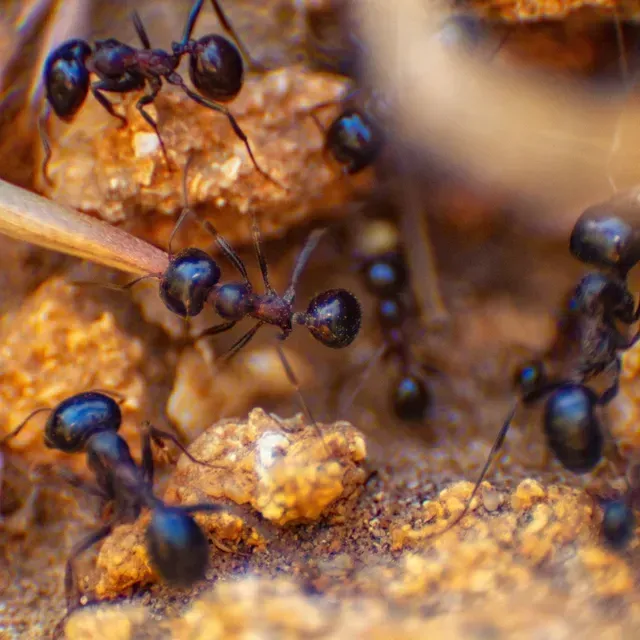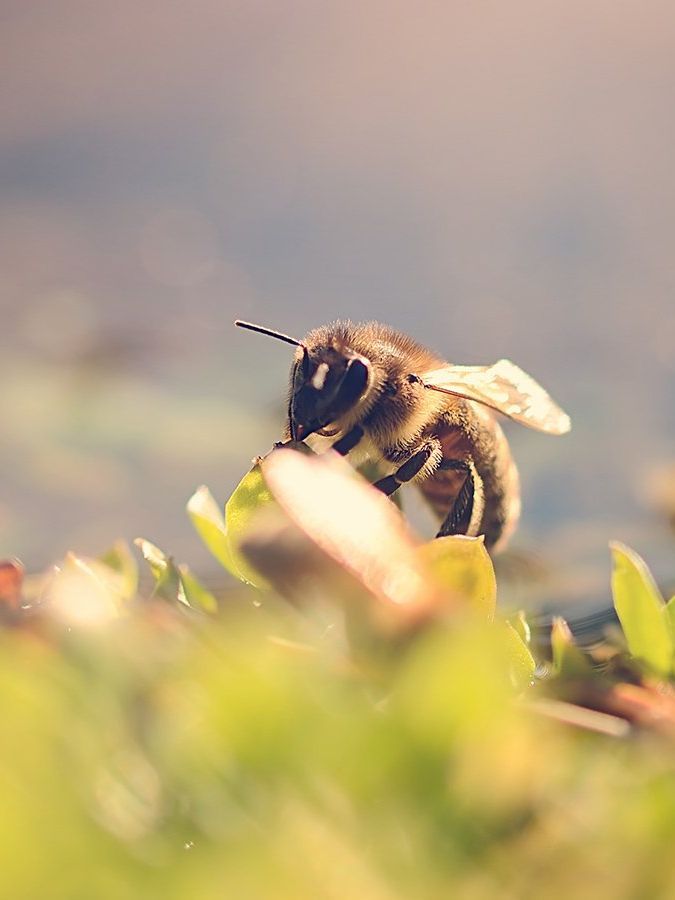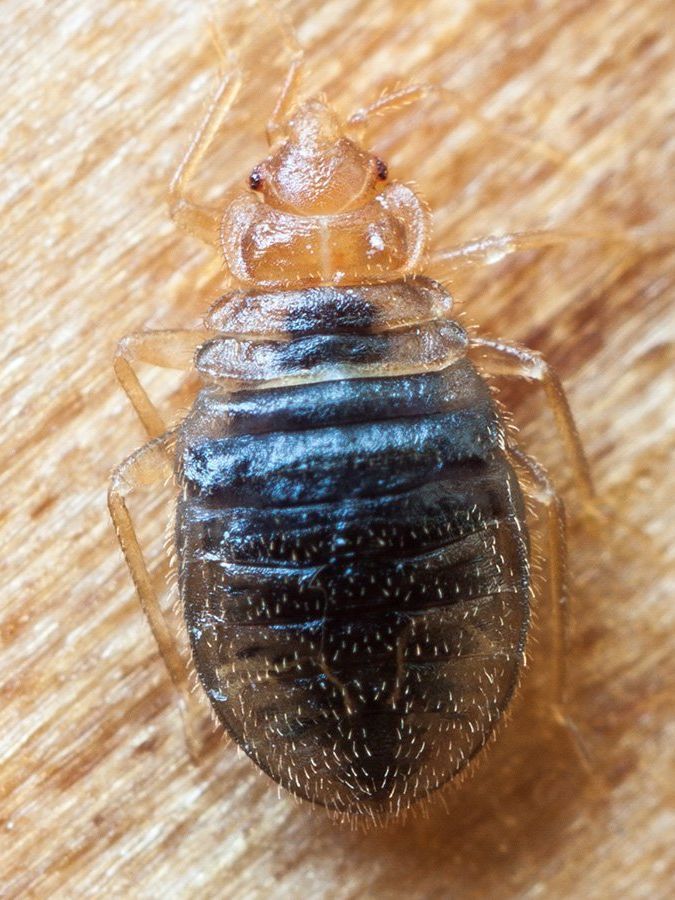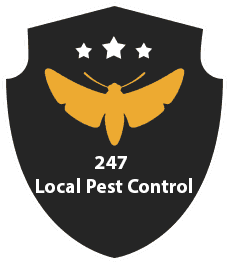Ant Infestations: Identifying Signs and Effective Solutions
Ant infestations pose a significant threat to the structural integrity of buildings, particularly through the destructive actions of certain ant species like carpenter ants. Here's how ants can cause property damage:
- Tunneling Through Wood: Carpenter ants are skilled excavators that tunnel through wood to create their nests. While they do not eat wood like termites, their constant tunneling activity can weaken wooden structures over time, compromising their strength and stability.
- Weakening of Structural Components: Carpenter ants prefer damp or decaying wood but are also known to infest dry, sound wood. As they tunnel and nest within wooden components such as beams, joists, and siding, they gradually hollow out the wood, weakening its structural integrity and posing a risk of collapse.
- Electrical Damage: In addition to wood, carpenter ants may also damage electrical wiring. They may nest near electrical outlets, light fixtures, or other wiring components, leading to potential shorts, malfunctions, or even electrical fires.
- Costly Repairs: Repairing the structural damage caused by carpenter ants can be both labor-intensive and costly. Depending on the extent of the infestation and damage, repairs may involve replacing damaged wood, reinforcing weakened structures, and addressing any underlying moisture issues that contributed to the infestation.
Given the potential for extensive property damage caused by ants, particularly carpenter ants, it's essential to address ant infestations promptly and effectively. Professional pest control services can provide targeted treatments to eradicate ants and prevent further damage, helping to safeguard the structural integrity and value of your property.


Types of Ants
Professionals employ a variety of treatments and techniques to effectively eliminate roaches and prevent their return. Here's an overview:
- Insecticide Applications: Pest control technicians use specialized insecticides formulated to target roaches. These products are applied strategically in areas where roaches are known to harbor, such as cracks, crevices, and voids. Insecticide sprays may also be used as a barrier treatment around the perimeter of the property to prevent roaches from entering.
- Baiting Systems: Baiting is a highly effective method for controlling roach populations. Gel baits containing insecticide are placed in strategic locations where roaches are likely to encounter them, such as along baseboards, in cabinets, and behind appliances. Roaches are attracted to the bait, consume it, and then carry the insecticide back to their nests, where it is transferred to other roaches, effectively eliminating the entire colony.
- Dusts and Powders: Insecticidal dusts and powders are applied to voids, cracks, and other inaccessible areas where roaches hide and breed. These products adhere to the roaches' bodies, killing them upon contact or ingestion. Dusts and powders are particularly effective for treating hard-to-reach areas and can provide long-lasting residual control.
- Growth Regulators: Growth regulators disrupt the development of roaches, preventing them from reaching maturity and reproducing. These products are often used in conjunction with other treatments to control roach populations and prevent future infestations.
- Targeted Strategies: Pest control professionals tailor their treatment approach based on the specific type of roach infestation and the unique characteristics of the property. For example, German roaches may require different treatment methods than American roaches due to differences in behavior and habitat preferences.
By utilizing a combination of these treatments and techniques, pest control professionals can effectively eliminate roaches from your property and implement preventive measures to keep them from returning. It's important to consult with a qualified pest control provider to develop a customized treatment plan that addresses your specific needs and ensures long-term success.
Signs of Ant Infestations
- Sightings of Ants: Ants are commonly seen inside homes or businesses, trailing along walls, floors, or countertops. They are often found near food sources or water, indicating their foraging behavior.
- Ant Trails: Ants travel in well-defined trails, guided by scent pheromones laid down by scout ants. These trails may be visible along baseboards, countertops, or other surfaces.
- Nests: Some ant species build visible nests outdoors, while others nest indoors, often in hidden areas like walls or under floors. Signs of nesting activity include piles of soil or debris, particularly near entry points or areas with moisture.
- Damage to Property: Certain ant species, like carpenter ants, can cause damage to wooden structures through tunneling activity. Signs of wood damage include small holes, sawdust-like frass, or weakened structural components.
- Damage to Food Items: Ants infest pantries or cabinets, attracted to food sources. Signs of ant activity in food packaging include chewed holes, trails of ant debris, or small piles of discarded food particles.
- Musty Odors: Some ant species, such as odorous house ants, emit a foul odor when crushed or disturbed. A musty or unpleasant smell may indicate an ant infestation.
- Swarming Behavior: Ant colonies may produce winged reproductive ants known as swarmers. Swarms of flying ants indoors or outdoors may signal the presence of an ant colony.
Prompt action is crucial upon noticing any signs of ant infestation to prevent further damage and health risks. Professional pest control services offer targeted treatments to eradicate ants effectively and prevent future infestations, ensuring the safety and comfort of your home or business.


Health Risks Associated with Ants
Ant infestations pose several potential health hazards that should not be underestimated. Here are some key points to consider:
- Bites and Stings: Some ant species, such as fire ants, are capable of delivering painful bites or stings when provoked or disturbed. These bites and stings can cause discomfort, itching, swelling, and in severe cases, allergic reactions or anaphylaxis.
- Allergens: Ants can carry allergens on their bodies, including proteins found in their saliva and feces. Exposure to these allergens can trigger allergic reactions in sensitive individuals, leading to symptoms such as itching, redness, swelling, and respiratory issues like asthma.
- Disease Transmission: While ants are not known to transmit diseases directly to humans, they can contaminate food and surfaces with bacteria and pathogens. This contamination can lead to foodborne illnesses and other health problems if ingested or come into contact with open wounds.
- Secondary Infections: Ant bites or stings can sometimes lead to secondary infections if the skin is broken or scratched. Scratching bites or stings can introduce bacteria into the wound, increasing the risk of infection and requiring medical attention.
- Psychological Impact: Persistent ant infestations can also have a psychological impact on individuals, causing stress, anxiety, and discomfort. Living with the constant presence of ants in your home or business can affect your overall well-being and quality of life.
Given these potential health risks associated with ant infestations, it's crucial to address the problem promptly and effectively. Professional pest control services offer targeted treatments to eradicate ants and prevent further infestations, safeguarding human health and safety. Don't hesitate to seek professional assistance to protect yourself, your family, and your employees from the health hazards posed by ants.
Prevention Strategies to Avoid Future Ant Infestations
- Sanitation Practices: Keep your home or business clean and free of food debris by regularly sweeping, mopping, and vacuuming floors. Wipe down countertops, tables, and other surfaces to remove spills and crumbs that can attract ants. Store food in sealed containers and promptly clean up any food or beverage spills to minimize attractants.
- Sealing Entry Points: Inspect your property for cracks, gaps, and openings that ants can use to gain entry. Seal any gaps around windows, doors, pipes, and vents with caulk or weather stripping to prevent ants from entering your home or building. Repair any damaged screens on doors and windows to keep ants out.
- Eliminating Food and Water Sources: Keep outdoor garbage bins tightly sealed and empty them regularly to reduce odors that attract ants. Trim back vegetation and remove debris from around the perimeter of your home or business to eliminate potential harborage areas for ants. Fix any leaks or drips from faucets, pipes, or appliances to remove potential water sources that ants may be attracted to.
- Proper Food Storage: Store food in airtight containers to prevent ants from accessing it. Avoid leaving pet food out overnight, and clean up any spills or leftovers promptly. Consider using ant-proof pet food bowls to prevent ants from accessing pet food dishes.
- Regular Inspections: Schedule regular inspections of your property to identify and address any signs of ant activity early on. Look for ant trails, nests, or signs of damage to property or food items that may indicate an infestation. Address any issues promptly to prevent ant infestations from becoming established.
By implementing these prevention strategies, you can minimize the risk of future ant infestations and maintain a pest-free environment in your home or business. If you need assistance with pest control or would like further advice on preventing ant infestations, don't hesitate to contact a professional pest control provider for guidance.


